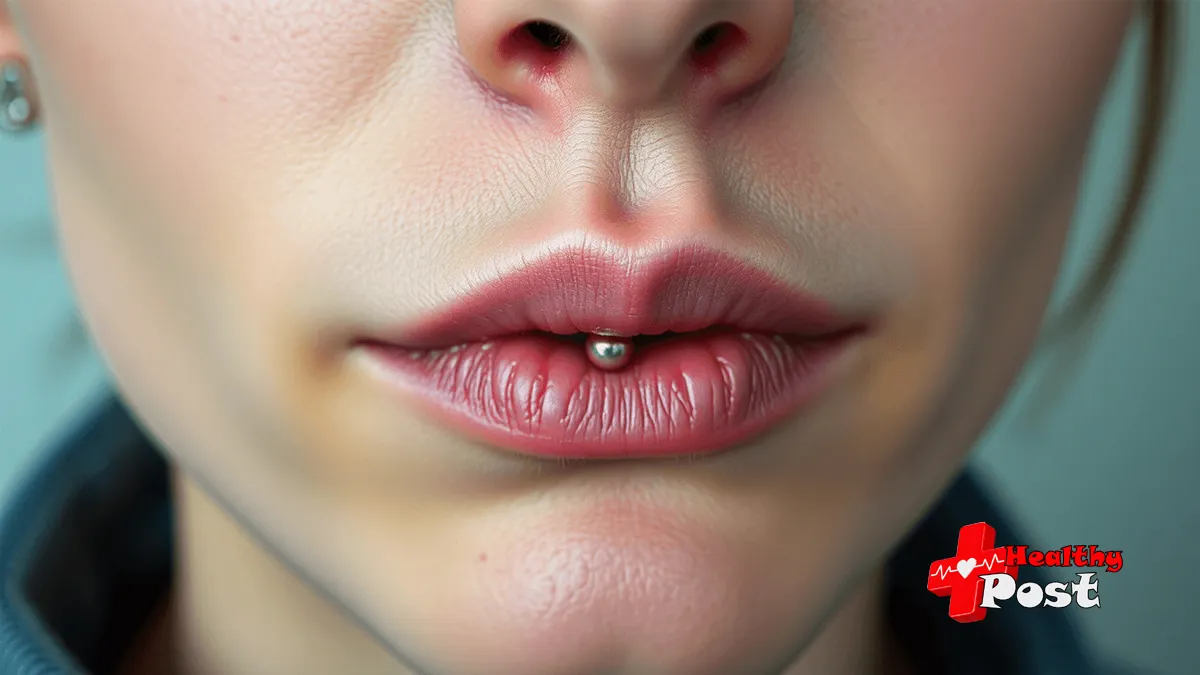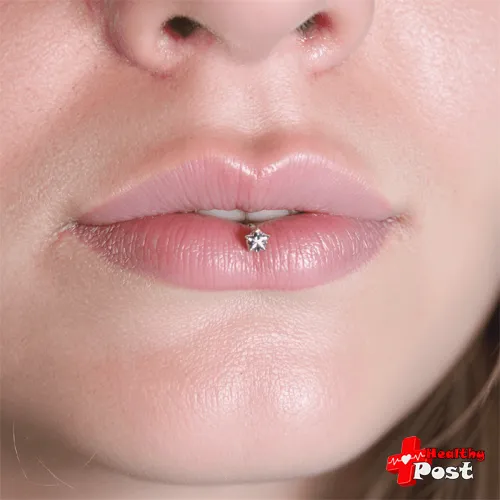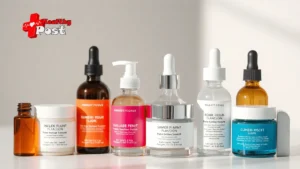
Vertical Lip Piercing: 10 Hidden Dangers You Shouldn’t Ignore
A vertical lip piercing stands as one of the boldest statements in body modification art. This unique piercing style has gained massive popularity among those seeking to express their individuality.
The piercing creates a striking appearance by running through the center of your lower lip. It features two visible ends – one peeking out above your lip, the other beneath it.
Many people rush into getting this trendy piercing without understanding its potential risks. Your safety matters more than style. Let’s explore the hidden dangers that could affect your health.
This guide reveals crucial information about:
- Infection risks from daily activities
- Possible nerve damage
- Dental health impacts
- Healing complications
- Long-term effects on daily life
Your decision to get a vertical lip piercing deserves careful thought. Knowledge about these risks helps you make smart choices about your body modification journey.
“Understanding the risks isn’t meant to scare you – it’s about making informed decisions about your body.”
Ready to learn what professional piercers don’t always tell you? Let’s dive into the world of vertical lip piercings.
What is Vertical Lip Piercing?
A vertical labret piercing creates a unique look by passing through the center of your lower lip. This piercing style differs from other lip piercings because it doesn’t enter your mouth.
The Piercing Process
The process starts with marking two points:
- Entry point: The bottom edge of your lower lip
- Exit point: The top of your lower lip
The jewelry sits vertically in your lip tissue, showing both ends on the outside of your mouth. Most piercers use a curved barbell that follows your lip’s natural shape.
Choosing the Right Jewelry
Your piercing professional will pick the right jewelry size based on your lip thickness. Common jewelry options include:
- Surgical stainless steel
- Medical-grade titanium
- 14-18 karat gold
The curved shape of the jewelry helps prevent damage to your teeth and gums. Your lip tissue will swell during healing, so your first piece of jewelry needs extra length.
How It Differs from Traditional Lip Piercings
This piercing type stands out from traditional lip piercings. The vertical placement creates a striking look while reducing contact with the inside of your mouth.
Determining Candidacy
Your piercer will check your lip anatomy to ensure you’re a good candidate. The right lip structure allows proper jewelry placement and reduces healing problems.
The Procedure and Healing Process
Professional piercers follow strict steps to ensure a safe vertical lip piercing:
- Marking the spot: The piercer marks entry and exit points on your lip
- Cleaning: Your lip gets cleaned with medical-grade antiseptic
- Clamping: Special tools hold your lip steady
- Piercing: A hollow needle creates the channel
- Jewelry insertion: The chosen jewelry slides through right after
The whole process takes about 15-20 minutes. Your piercer will check the placement and tightness of the jewelry.
What to Expect During Healing
The healing journey spans 6-8 weeks. Here’s what happens:
- Week 1: Expect swelling, redness, and mild discomfort
- Week 2-3: Swelling goes down, but the area stays tender
- Week 4-6: A crust forms around the piercing holes
- Week 7-8: The tissue starts to firm up
Signs of Normal Healing:
- Light bleeding in the first few days
- Clear or white fluid discharge
- Mild warmth around the piercing
- Gradual decrease in tenderness
Your piercer might schedule a check-up visit after the first week to monitor your healing progress.
Aftercare Tips for a Successful Healing Journey
Your vertical lip piercing needs proper care to heal well. Here’s what you need to do:
Daily Cleaning Routine
- Clean the piercing 2-3 times daily with sterile saline solution
- Use a clean paper towel to pat the area dry
- Never use cotton swabs – they can leave fibers behind
Hands-Off Approach
- Keep your hands away from the piercing
- Don’t twist, turn, or play with the jewelry
- If you must touch it, wash your hands with soap first
Lifestyle Changes During Healing
- Skip smoking – it slows down healing
- Avoid alcohol consumption
- Stay away from spicy foods
- Don’t wear makeup near the piercing
- Sleep on your back to prevent irritation
Warning Signs to Watch
- Redness that spreads beyond the piercing
- Warm or hot sensation around the area
- Yellow or green discharge
- Severe pain or swelling
Food and Drink Tips
- Take small bites of food
- Drink through a straw
- Rinse with salt water after eating
- Avoid very hot or cold drinks
Remember to keep these habits for at least 6-8 weeks. Your piercer might give you specific instructions based on your healing progress. It’s also important to note that following proper aftercare guidelines is crucial not just for cosmetic reasons but also to prevent potential complications such as infection or improper healing. For more information on general wound care, including surgical wounds which have similar healing principles, you can refer to this surgical wound care guide.
1. Infection: A Common Risk You Should Be Aware Of
Your vertical lip piercing creates an open wound – making it a perfect spot for bacteria to grow. The mouth area faces constant exposure to different types of bacteria from:
- Food particles
- Drinks
- Makeup products
- Saliva
- Environmental contaminants
Watch out for these infection signs:
- Redness spreading beyond the piercing site
- Hot, burning sensation
- Yellow or green discharge
- Unusual swelling
- Fever
- Bad smell from the piercing
- Pain that gets worse over time
Prevent Infections With These Steps:
- Clean your hands before touching the area
- Use only sterile saline solution for cleaning
- Avoid makeup near the piercing
- Don’t share food or drinks
- Keep your phone screen clean
- Skip swimming pools during healing
- Replace your toothbrush with a new one
A healthy piercing should look pink, not red. The skin around it stays cool to touch. Clear fluid might appear during healing – this is normal. Any other color discharge needs medical attention.
Your piercer should give you specific cleaning instructions. Follow them strictly. Different piercings need different care approaches. When in doubt, ask your piercer or doctor for help.

2. Rejection and Scarring: The Body’s Reaction to Consider
Your body sees piercings as foreign objects. Sometimes, it tries to push the jewelry out – this is called rejection. The signs of rejection include:
- The jewelry moving toward the skin surface
- The piercing hole getting bigger
- Skin around the piercing looking thin or see-through
- Jewelry hanging differently than before
When rejection happens, the skin creates scar tissue to heal itself. This can leave marks on your lip that might stay forever.
Understanding the Scarring Risk
Different types of scars can form:
- Flat scars – light marks that fade over time
- Raised scars – bumpy tissue that stands out
- Keloid scars – thick, dark scars that grow beyond the piercing site
Quick action helps prevent bad scarring. If you notice these signs, visit your piercer:
- Redness spreading beyond the piercing
- The jewelry feeling loose
- Skin looking stretched or transparent
- Pain or burning sensations
The right jewelry material reduces rejection risk. Medical-grade titanium and 14k gold are safe choices for most people. Plastic jewelry increases rejection chances.
Regular checks with your piercer help catch rejection early. They can remove the jewelry before serious scarring happens.
3. Tooth and Gum Damage: A Hidden Danger That Can Affect Your Dental Health
Your vertical lip piercing jewelry can create serious dental problems when it rubs against your teeth and gums. The constant contact between metal and teeth leads to gradual wearing down of tooth enamel.
Dental professionals have identified several risks associated with lip piercings:
- Chipped Teeth: Metal jewelry hitting against teeth during talking or eating
- Receding Gums: Pressure from jewelry pushing against gum tissue
- Tooth Decay: Bacteria buildup around piercing site
- Root Damage: Deep tissue trauma from constant jewelry movement
The placement of vertical lip piercing makes it particularly risky for your front teeth. These teeth face direct contact with the jewelry’s back end, increasing their chances of damage.
Signs of dental issues to watch for:
- Increased tooth sensitivity
- Bleeding gums
- Visible wear on tooth surfaces
- Pain while chewing
Proper jewelry sizing plays a crucial role in preventing dental damage. A professional piercer should fit you with appropriate-length jewelry that minimizes contact with your teeth and gums.
Regular dental check-ups become essential after getting a vertical lip piercing. Your dentist can spot early signs of damage and suggest protective measures like switching to plastic jewelry or adjusting your piercing position.
4. Swelling and Pain: Normal Symptoms or Cause for Concern?
Pain and swelling are natural responses after getting a vertical lip piercing. Your body reacts to the new jewelry by sending extra blood to heal the area.
Here’s what to expect during the first few days:
- Mild to moderate pain
- Swelling around the piercing site
- Slight redness
- Tenderness when touching the area
- Small amounts of clear discharge
These symptoms should start to improve after 3-5 days. The healing process varies for each person, but most people feel better within a week.
Seek Medical Attention if you notice:
- Severe pain that gets worse
- Excessive swelling that spreads
- Green or yellow discharge
- Fever or chills
- Hot, throbbing sensation
- Jewelry becoming embedded
- Dark red or purple coloring
- Persistent bleeding
Quick Relief Tips:
- Apply ice packs wrapped in clean cloth
- Take over-the-counter pain medication
- Rinse with salt water solution
- Keep your head elevated while sleeping
- Avoid spicy or acidic foods
The key to successful healing lies in distinguishing normal healing signs from warning signals. Trust your instincts – if something feels wrong, contact your piercer or healthcare provider.
5. Nerve Disruption: An Unexpected Link Between Facial Piercings and Nerve Issues
Your face has many sensitive nerve endings that can get affected during a vertical lip piercing. These nerve issues might show up right after the piercing or develop slowly over time.
Research links facial piercings to unexpected health problems:
- Back pain from nerve pathway disruption
- Eye alignment changes
- Numbness around the piercing site
- Tingling sensations in the lip area
- Changes in facial expressions
- Altered taste perception
The pressure from jewelry can irritate nearby nerves, creating a chain reaction through your body’s nerve network. This explains why some people feel pain far from their piercing site.
Signs of nerve damage to watch for:
- Loss of feeling in parts of your lip
- Sharp, shooting pains
- Burning sensations
- Difficulty moving your mouth naturally
- Changes in how food tastes
A skilled piercer will map out nerve locations before starting the procedure. This careful planning helps avoid major nerve pathways. Still, even well-placed piercings can affect smaller nerve endings.
If you notice any unusual sensations, removing the jewelry quickly can help prevent lasting nerve damage. Your body has amazing healing abilities when given the chance to recover.
6. Allergic Reactions: Are You Prone to Metal Allergies?
Metal allergies can turn your Vertical Lip Piercing dream into a painful experience. The most common trigger? Nickel alloys found in cheaper jewelry.
Signs of a Metal Allergy
Signs of a metal allergy include:
- Redness around the piercing
- Itching or burning sensation
- Small bumps or rashes
- Swelling beyond normal healing
- Crusty or oozing discharge
Your body might react differently to various metals. Some people show symptoms right away, others develop sensitivity over time.
Safe Jewelry Options for Sensitive Skin
Safe jewelry options for sensitive skin:
- Medical-grade titanium
- Solid 14k-18k gold
- Niobium
- Platinum
A patch test before getting pierced can help identify potential metal allergies. Ask your piercer to place a small piece of jewelry material on your skin for 24 hours.
Many people don’t know they’re allergic until after getting pierced. That’s why choosing high-quality jewelry from the start matters so much.
Your piercer should offer jewelry options made from hypoallergenic materials. Don’t hesitate to ask about the metal composition – it’s your skin at stake.
Remember: cheaper jewelry often contains hidden nickel. Investing in quality pieces saves you from painful allergic reactions later.
7. Impact on Quality of Life: How Vertical Lip Piercings Can Affect Your Daily Activities
A vertical lip piercing can change your daily routine in ways you might not expect. Let’s look at common daily activities that become challenging:
Eating and Drinking
- Hot foods and drinks may cause pain
- Spicy meals can irritate the piercing site
- Crusty or hard foods might bump the jewelry
- Straws become tricky to use
Speaking Changes
- New lisping sounds during healing
- Difficulty pronouncing certain words
- Slower speech to avoid pain
- Jewelry clicking against teeth while talking
Work and Social Life
- Face masks can catch on jewelry
- Makeup application needs careful attention
- Phone calls might feel uncomfortable
- Kissing becomes off-limits during healing
Sleep Disruption
- Side sleeping may cause discomfort
- Jewelry can catch on pillowcases
- Night-time swelling affects rest quality
These complications often last through the healing period. Some people find themselves:
- Avoiding social meals
- Missing work days due to swelling
- Changing their diet to softer foods
- Skipping their favorite activities
The good news? Most of these challenges are temporary. Your body adapts to the new jewelry, creating new muscle memory for speaking and eating.
Interestingly, while we’re discussing piercings, it’s worth mentioning that other types of piercings, such as a belly button piercing, also come with their own set of lifestyle adjustments and potential complications.
8. Unsuitable Candidates: Who Should Avoid Vertical Lip Piercing?
Some people should skip vertical lip piercing due to health risks. Here’s a list of individuals who need to think twice:
Pregnant Women
- The body’s immune response changes during pregnancy
- Higher risk of infections
- Healing takes longer than usual
- Hormonal changes can affect piercing success
People with Weak Immune Systems
- HIV/AIDS patients
- Cancer patients getting treatment
- Autoimmune disease patients
- Diabetes patients with poor sugar control
Other High-Risk Groups:
- People with blood clotting disorders
- Those prone to keloid scarring
- Heart valve condition patients
- People with oral health issues
A weak immune system makes fighting infections harder. Your body needs strength to heal a piercing wound.
Certain medications can also make piercings risky:
- Blood thinners
- Immunosuppressants
- Steroids
- Some antibiotics
Talk to your doctor before getting a vertical lip piercing. They can check if your health status allows for safe piercing healing.
Remember: A responsible piercer will ask about your health history. They might refuse service if they spot red flags.
9. Complications from Improper Care: The Dangers of Neglecting Hygiene Protocols
Self-piercing attempts for vertical lip piercings can lead to severe, life-threatening complications. DIY piercings often result in uneven placement, tissue damage, and dangerous infections.
Common complications from improper care include:
- Bacterial infections spreading to nearby tissues
- Formation of painful abscesses
- Development of blood-borne infections
- Permanent scarring or disfigurement
- Severe allergic reactions to non-sterile equipment
Poor hygiene practices can trigger these issues:
- Touching the piercing with dirty hands
- Using non-sterile cleaning solutions
- Failing to clean the piercing regularly
- Changing jewelry too early
- Using low-quality or inappropriate jewelry
“Professional piercers use sterilized equipment and follow strict hygiene protocols to prevent complications.”
The risks of improper care extend beyond the initial healing period. Neglecting basic hygiene can cause:
- Jewelry embedding into the lip tissue
- Chronic inflammation and swelling
- Formation of keloid scars
- Tissue death around the piercing site
- Oral health problems
Always seek professional piercing services and follow their aftercare instructions carefully. Regular cleaning with saline solution helps prevent these dangerous complications from developing.
FAQs (Frequently Asked Questions)
What is a vertical lip piercing and where is it placed?
A vertical lip piercing, also known as a vertical labret piercing, is a type of body modification where jewelry is inserted vertically through the lower lip. The jewelry is visible from both inside and outside the mouth, making it a distinctive and popular choice for lip piercings.
What are the key steps involved in the vertical lip piercing procedure and healing process?
The procedure involves a professional piercer using a sterile needle to pierce the lower lip vertically. Maintaining strict hygiene during the process is crucial to prevent complications. The typical healing time varies but requires careful aftercare including cleaning with sterile saline solution and avoiding touching or rotating the jewelry with unwashed hands.
What are common hidden dangers associated with vertical lip piercings that I should be aware of?
Hidden dangers include risks of infection from bacteria exposure, potential rejection of the jewelry leading to scarring, tooth and gum damage due to jewelry rubbing against oral tissues, swelling and pain that may require medical attention if persistent, nerve disruption causing symptoms like back pain or eye misalignment, allergic reactions especially to nickel alloys in jewelry, impact on daily activities such as eating and speaking, and complications from improper care or self-piercing attempts.
How can I properly care for my vertical lip piercing to ensure successful healing?
Proper aftercare involves regularly cleaning the piercing area with sterile saline solution, avoiding touching or rotating the jewelry without washing your hands first, refraining from smoking and alcohol consumption during healing, and following any additional instructions provided by your professional piercer to minimize risks of infection and other complications.
Who should avoid getting a vertical lip piercing due to health concerns?
Individuals who are pregnant or have weakened immune systems should avoid vertical lip piercings as these conditions may hinder proper healing and increase the risk of complications. It’s important to consult with a healthcare professional before considering this type of body modification if you have underlying health issues.
What signs indicate that I should seek medical attention for my vertical lip piercing?
While initial swelling and pain are normal after getting a vertical lip piercing, you should seek medical attention if these symptoms persist beyond the typical healing period or worsen over time. Other warning signs include severe infection symptoms like excessive redness, pus discharge, fever, persistent bleeding, or signs of allergic reaction such as rash or itching around the piercing site.

